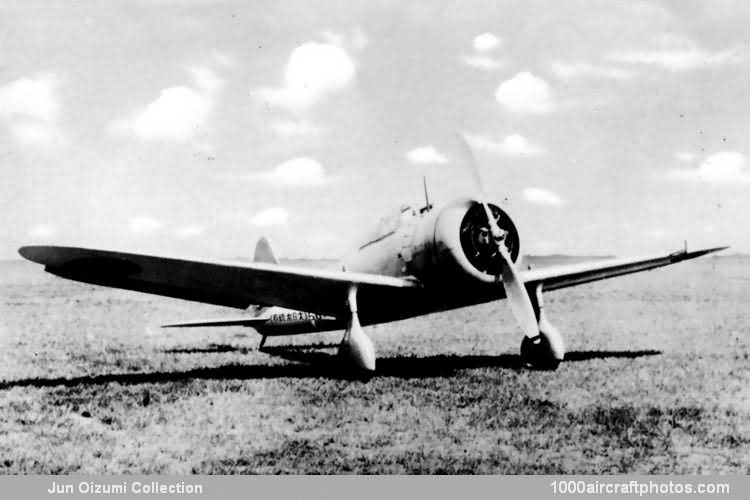07/31/2011. Remarks by Johan Visschedijk: "In June 1935, the Imperial Japanese Army Air Force (IJAAF) framed a requirement for what it termed an advanced fighter, bringing competing designs from Kawasaki, Mitsubishi and Nakajima. The Nakajima team, led by Yasushi Koyama, designed, as a company-funded project, the PE. An all-metal stressed-skin cantilever monoplane, the PE was completed in July 1936, two essentially similar prototypes being produced as Ki-27s for the official competition, the first of these flying on October 15, 1936.
Comparative trials with the other contenders resulted in an order for 10 pre-series Ki-27s for service evaluation. Series production was ordered on December 28, 1937 as the Type 97 Fighter Model Ko (Ki-27-Ko) with a Nakajima Kotobuki Ha-1-Otsu engine rated at 780 hp at 9,515 ft (2,900 m). Armament comprised two 0.303 in (7.7 mm) machine guns.
Production of the Ki-27-Ko gave place to the Ki-27-Otsu embodying minor changes. Two were experimentally fitted with an additional fuselage fuel tank under the designation Ki-27-KAI, but flush-fitting external wing tanks were subsequently standardized. By December 1940, production of the Ki-27 had been transferred from the parent company to Mansyu in Manchuria where production continued until July 1942.
When production ended, 3,396 had been delivered, 2,017 of these having been built by Nakajima. At the commencement of the Pacific War, the Ki-27 equipped all but two first-line fighter groups of the IJAAF, and it remained in service with the Manchukuo (Manchuria) Air Force until the end of the conflict."
07/31/2011. Remarks by Jun Oizumi: "Already in 1931 the IJAAF and the Imperial Japanese Navy (IJN) started their civilian donation campaign, in which individuals, groups or companies raised money to donate equipment (initially mostly aircraft) to the IJAAF and the IJN. In return, the donated IJAAF aircraft were often inscribed with Aikoku (patriotism) and the donated IJN aircraft with Houkoku (tribute to country) followed by the donation number and the name of the donator(s).
The very first donated aircraft (Aikoku No.1) for the IJAAF was a Junkers S 36 K 37 twin-engined bomber (modified to Japanese specifications by Mitsubishi) that was delivered in January 1932, while the first donated aircraft (Houkoku No.1) for the IJN was a Kawanishi E5K1 Type 90-3 reconnaissance floatplane, which was delivered shortly thereafter.
The above image shows the aircraft that was donated to the IJAAF by the Dainihon Seishi Genryo Shogyo Kumiai (Japanese Commercial Pulp Union). The company name was abbreviated, and hence the aircraft is inscribed with Aikoku-567 Dainihonshigen-go. The company also donated a Mitsubishi A6M2 Rei-sen Type 0 Model 21 to the IJN, which was inscribed Houkoku-473 Dainihonshigen-go. My grandfather, Teiji Oizumi, received the postcard as a memento when he attended the presentation ceremony of the fighters in 1941."
